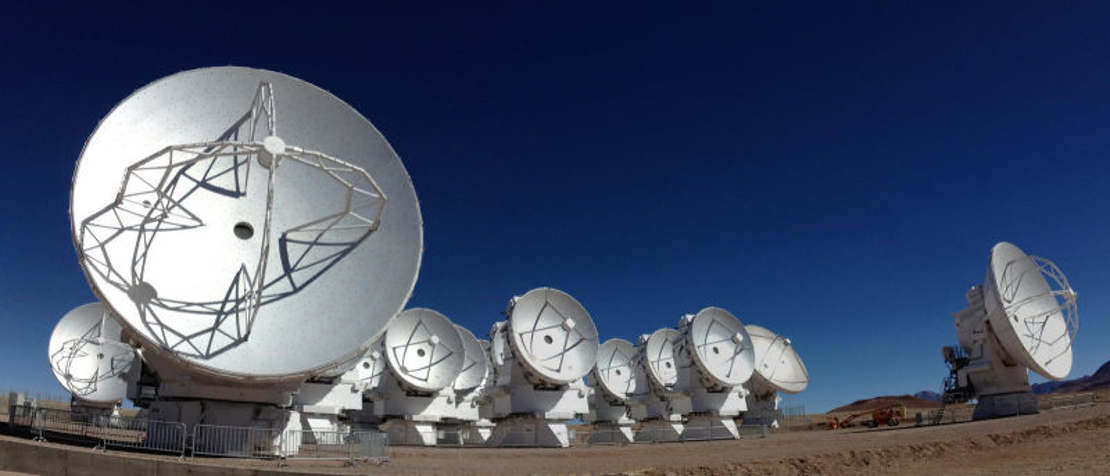
Rather than being a single snapshot, like the many spectacular photos taken by the Hubble Space Telescope, the EHT‘s image is the product of a process called interferometry, which combines observations from multiple telescopes into one image. Seeing into the heart of our galaxy turned out to be a bit more complicated than staring down the barrel of a black hole in the next galaxy cluster over, which is why M87’s portrait is out first. Because M87 is one of the nearest, biggest black holes, the team also decided to aim the telescope there, hoping to eventually compare the two bruisers. Called Sagittarius A*, that black hole is relatively puny compared to M87, containing the mass of just four million suns. The Event Horizon Telescope initially set out to snag an image of the supermassive black hole at the core of our galaxy, the Milky Way. Photograph by NASA and the Hubble Heritage Team (STScI/AURA) Orange on the moon In this Hubble image, the blue jet contrasts with the yellow glow from the combined light of M87's stars and star clusters. The center of M87 glows with a gargantuan cosmic searchlight: a black-hole-powered jet of subatomic particles traveling at nearly the speed of light. “Nature has conspired to let us see something we thought was invisible.” “It’s truly remarkable, it’s almost humbling in a certain way,” Doeleman says. The data also offer some hints about how some supermassive black holes manage to unleash gargantuan jets of particles traveling at near light-speed. One of the chief takeaways is a more direct calculation of the black hole’s mass, which tracks closely with estimates derived from the motion of orbiting stars. Six papers published today in the Astrophysical Journal Lettersdescribe the observational tour de force, the process of achieving it, and the details that the image reveals. “What you are seeing is evidence of an event horizon … we now have visual evidence of a black hole.” “We are delighted to be able to report to you today that we have seen what we thought was unseeable,” added project director Shep Doeleman of the Harvard-Smithsonian Institute for Astrophysics. “We’ve been studying black holes for so long that sometimes it’s easy to forget that none of us has ever seen one,” National Science Foundation director France Cordova said today during a press conference announcing the team’s achievement, held at the National Press Club in Washington, D.C. The EHT team is to be congratulated for overcoming many technical challenges to achieve the goal of imaging black holes.Please be respectful of copyright. This is very challenging because the images are heavily blurred by the interstellar gas. “Nevertheless, it will be very nice and gratifying to see the black hole shadows directly.

So I don’t expect EHT will reveal any surprises. These days all astrophysicists believe the existence of black holes at the center of galaxies and many of their properties as predicted by general relativity. “The black hole shadow was first studied and computed more than 40 years ago by Jim Bardeen in the U.S. and by Jean-Pierre Luminet in France. The strong gravity - the ‘event horizon’ - of black holes creates a dark shadow with a distinct shape where no light can be seen. More precisely, these are images of radiating hot gas orbiting very close to the black hole. “My guess is EHT will produce an image of the supermassive black hole at the center of the Milky Way galaxy and also an image of one at the center of the nearby galaxy M87. He is not involved with the project, but predicts the EHT team will reveal an image of a black hole at the center of the Milky Way galaxy, as well as an image of a black hole at the center of nearby galaxy M87.

Dong Lai is a professor of astronomy at Cornell University and an expert on black holes.


 0 kommentar(er)
0 kommentar(er)
